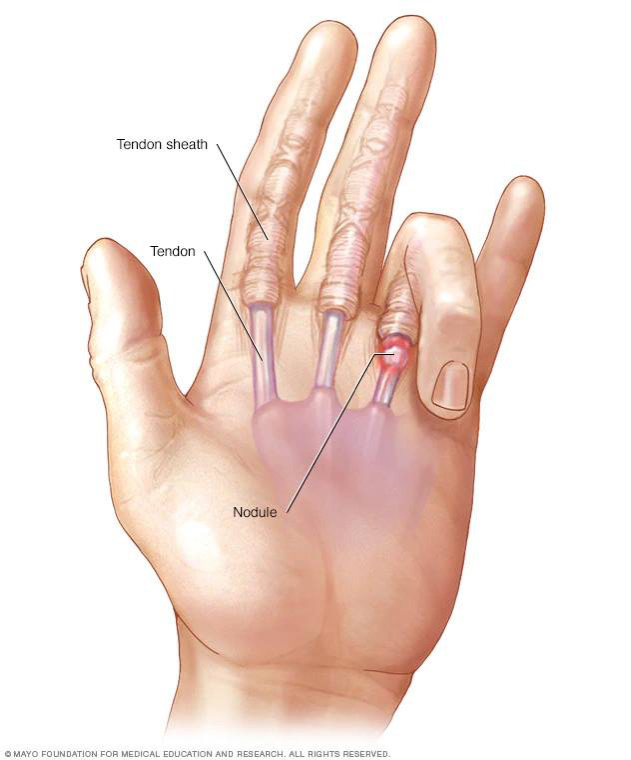By Marilou Audet, pccupational therapist
Cause
Trigger Finger, also known as Triggering Finger or Stenosing Tenosynovitis, is a common cause of hand pain. It results from a conflict between the tendon and its sheath. Inflammation occurs, and a nodule may develop. When the tendon and its nodule slide within the sheath, a catch or blockage occurs, creating the “trigger” phenomenon.
Interesting statistics:
- The risk of developing trigger finger is 2 to 3% in the general population and increases to 10% in people with diabetes.
- The problem is 6 times more common in women than in men.
- Stages of Stenosing Tenosynovitis (Trigger Finger)

| Stade 0 | No clicking or catching |
| Stade 1 | Audible click, palpable nodule, no catching |
| Stade 2 | Presence of catching; Active extension of the finger possible |
| Stade 3 | Presence of catching; No active extension of the finger possible |
| Stade 4 | Inability to perform flexion or extension of the affected finger. |
Conservative treatment
The early stages of trigger finger respond well to conservative treatment. This involves a period of rest for the finger with a splint for 6 to 12 weeks, depending on the clinical presentation of symptoms. Stretching exercises are also taught to maintain the mobility of the immobilized joint.
When the catching resolves, a gradual weaning from the splint, active exercises, and tendon gliding exercises can be started.
Some results
Conservative treatment with splinting
- Evans et al. demonstrated a success rate of 73% with the use of a splint combined with an exercise program.
- Patel and Bassini found that splint interventions were 77% effective in patients whose treatment was initiated within the first 6 months after the onset of symptoms, compared to 44% in those whose symptoms had been present for more than 6 months.
Cortisone injection
- A systematic review combining the results of four studies shows that cortisone injections are effective in 57% of patients.
Why encourage pccupational therapy care?
- Education on causes and risk factors is essential to prevent recurrence of the issue.
- It allows for the creation of a splint tailored to the client’s needs.
- Close supervision during treatment is encouraged to ensure the progression of exercises and the gradual reintegration of the affected hand into daily activities, aiming to prevent catching.
References
Valdes, K. (2012). A retrospective review to determine the long-term efficacy of orthotic devices for trigger finger.
Journal of Hand Therapy, 25 (1), 89-96.
Conservative management of trigger finger: A systematic review (2017)
A Retrospective Review to Determine the Long-term Efficacy of Orthotic Devices for Trigger Finger (2012)
Corticosteroid Injections in the Treatment of Trigger Finger: A Level I and II Systematic Review (2007)
